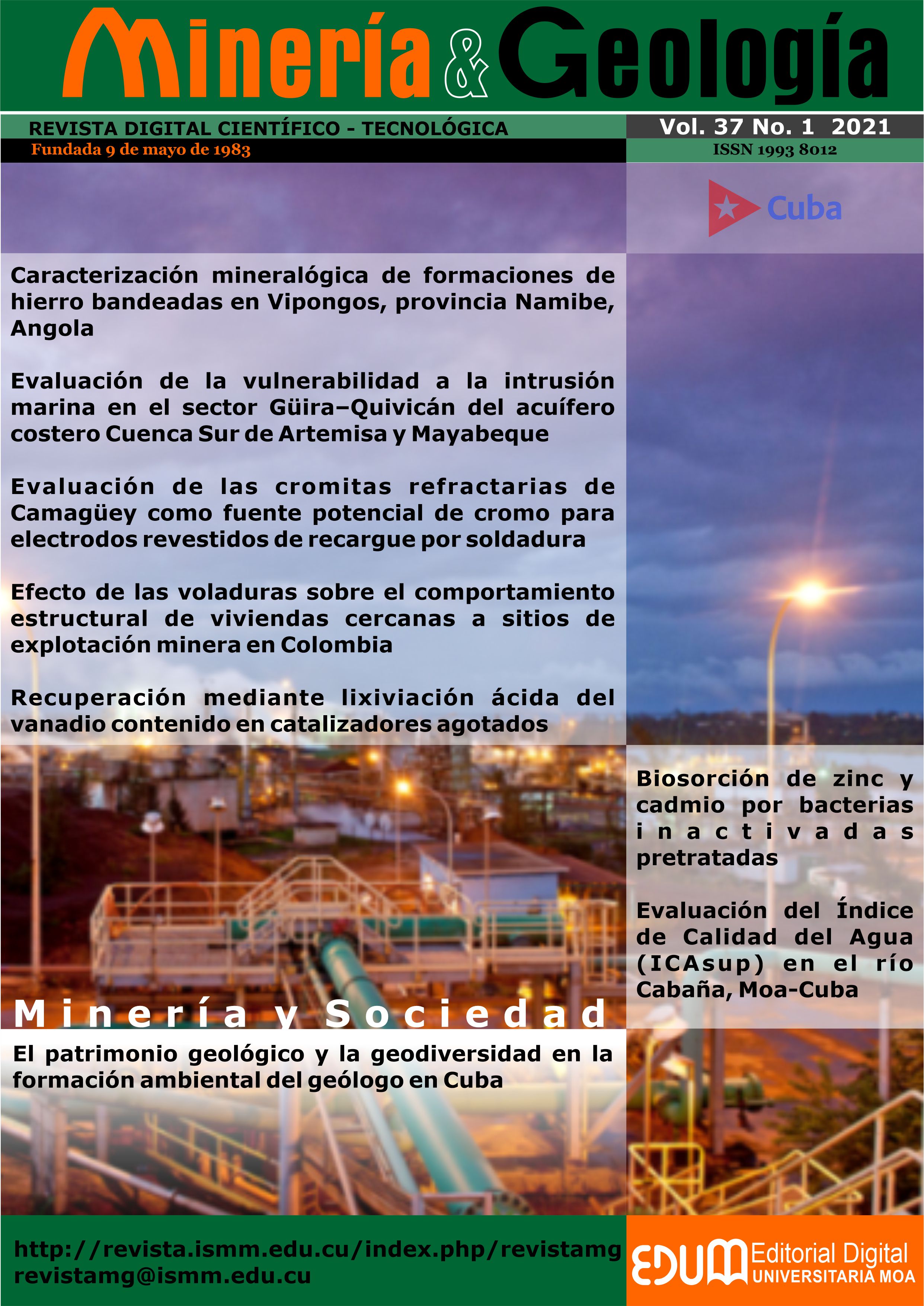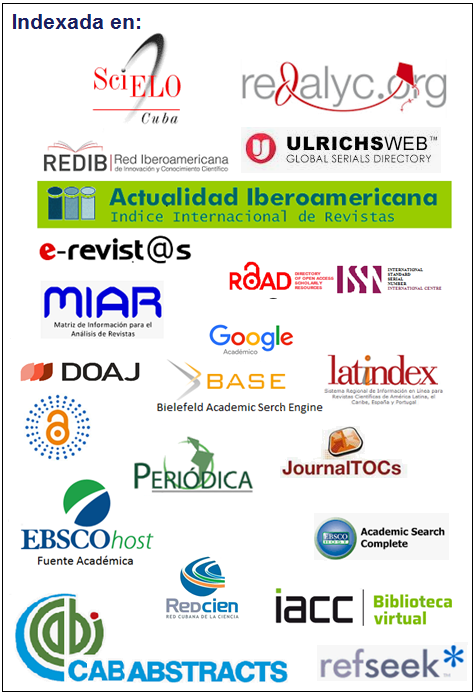The geological heritage and geodiversity in the environmental training of the geologist in Cuba
Keywords:
geological heritage, geodiversity, environmental training of geologist.Abstract
The exploitation of mineral resources brings with it effects on the environment, in particular, on the geological heritage and geodiversity, for this reason professionals with a solid environmental training are required to guarantee the protection of the geological heritage of the nation. This work points towards the need to strengthen, with regard to geological heritage and geodiversity, the environmental training of Geology students at Cuban universities. Different epistemological conceptions related to the environmental formative process are addressed and from this perspective the need to recognize that geological heritage and geodiversity are essential within the environmental training of the geology professional is highlighted. Theoretical methods such as analysis, synthesis and hermeneutics are used. It is concluded that heritage environmental training of geologists is essential as a process aimed at promoting the protection of the geological environment, geological heritage and geodiversity, in correspondence with what society expects from these professionals.Downloads
References
Aldana, Y. 2012. Estrategia curricular para el proceso de formación para el manejo del patrimonio geológico-minero en el Instituto Superior Minero Metalúrgico de Moa. Tesis de maestría. Instituto Superior Minero Metalúrgico de Moa.
Carcavilla-Urquí, L. 2014: Guía Práctica para entender el patrimonio geológico. Enseñanza de las Ciencias de la Tierra, 22(1): 5-18.
Carcavilla, L.; Durán, J. J. y López-Martínez, J. 2008: Geodiversidad: concepto y relación con el patrimonio geológico. Geo-Temas, 10: 1299-1303.
Castellanos-Abella, E. 2020: Nuevas Normas para conservar el patrimonio geológico cubano. Granma: La Habana, 8 de octubre de 2020. p. 8.
Fuentes-Gutiérrez, I. y Fernández-Martínez, E. 2014: Inventariar para conocer, conocer para valorar. Trabajando con el patrimonio geológico en el entorno de los centros educativos. Enseñanza de las Ciencias de la Tierra, 22(1): 38-48.
Hernández, F. J. 2002: El patrimonio como recurso en la enseñanza de las Ciencias Sociales. En: El patrimonio y la didáctica de las Ciencia Sociales. Universidad de Castilla–La Mancha. España.
Guerrero-Almeida, D.; Guardado-Lacaba, R. y Blanco-Torrens, R. 2003: La conservación del patrimonio geológico-minero como medio para alcanzar el desarrollo sostenible. Minería y Geología, 19(3-4). Disponible en: http://revista.ismm.edu.cu/index.php/revistamg/article/view/358
Ministerio de Energía y Minas (MINEM). 2018: Decreto 345: De la actividad de investigación geológica y del Servicio Geológico de Cuba. Gaceta Oficial Extraordinaria de la República de Cuba, No. 41. Disponible en: http://www.gacetaoficial.cu
Ministerio de Energía y Minas (MINEM). 2020: Decreto 11: Del Patrimonio Geológico de Cuba. Gaceta Oficial Ordinaria de la República de Cuba, No. 69. Disponible en: http://www.gacetaoficial.gob.cu
Ministerio de Energía y Minas (MINEM). 2020: Resoluciones 81 y 82 /2020. Gaceta Oficial Ordinaria de la República de Cuba, No. 69. Disponible en: http://www.gacetaoficial.gob.cu
Novo, M. 1995: La educación ambiental. Bases éticas, conceptuales y metodológicas. Madrid, España: Universitas.
República de Cuba. 2019: Constitución de la República de Cuba. Cuba. La Habana: Editora Política.
UNESCO. 2006: Convención sobre la Protección del Patrimonio Mundial, Cultural y Natural. Disponible en: htpp://www.unesco.org/new2006-convention
Published
How to Cite
Issue
Section
- Authors retain copyright and guaranteeing the right magazine to be the first publication of the work as licensed under a Creative Commons Attribution-NonCommercial that allows others to share the work with an acknowledgment of the work's authorship and initial publication in this journal.
- Authors may establish separate supplemental agreements for the exclusive distribution version of the work published in the journal (eg, place it in an institutional repository or publish it in a book), with an acknowledgment of its initial publication in this journal.
- Authors are allowed and recommended to disseminate their work through the Internet (e.g., in institutional telematic archives or on their websites) before and during the submission process, which can produce interesting exchanges and increase citations of the published work. (See The effect of open access)




